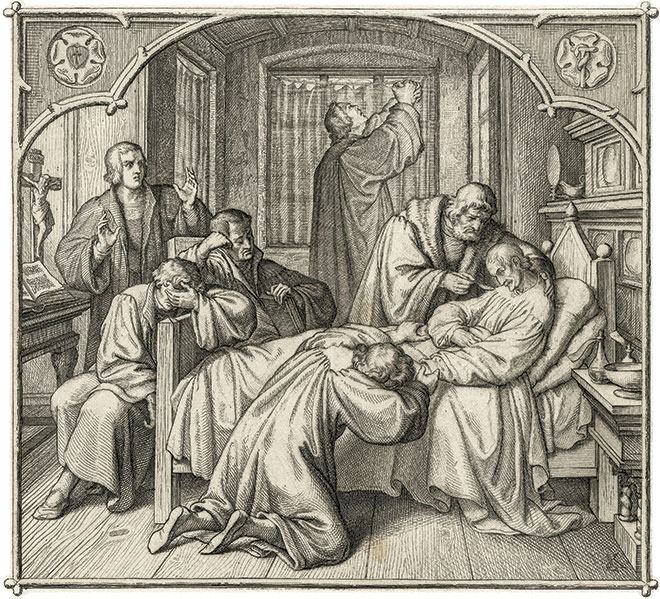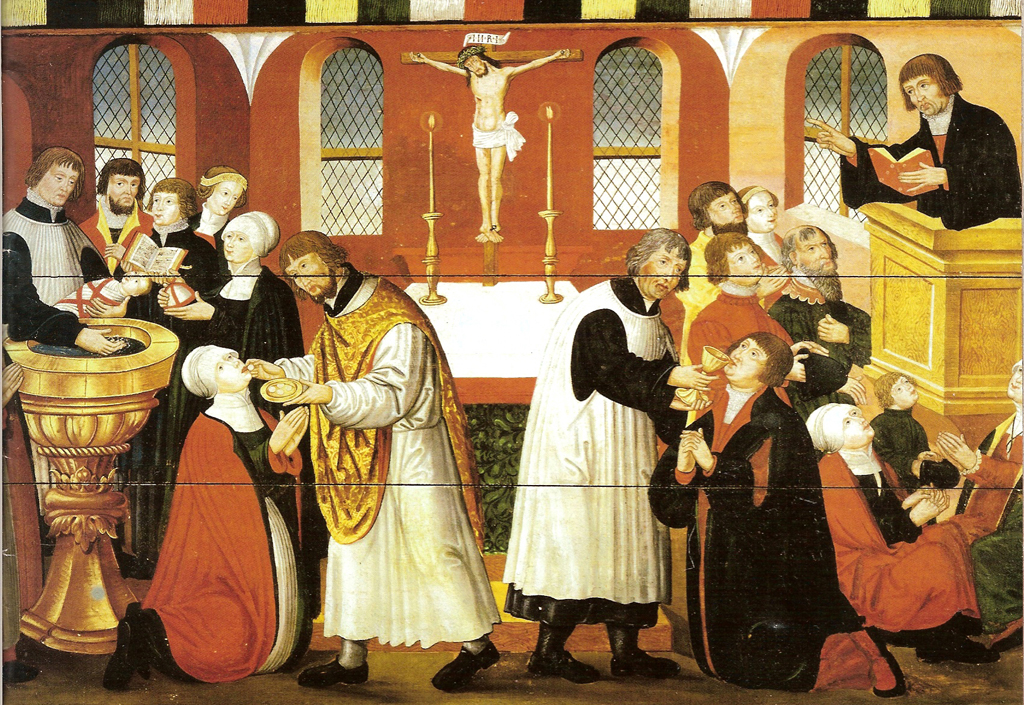
Introduction
At its heart, liturgical living is actually the daily preparation for death and for life to come. After all, when we join with our Lord in communion, prayer, and worship, we rehearse our own death in this world and the glory that is ours through Christ. The recent illness of my (Tessa’s) father and conversations with hospice have forced my dad to begin facing the reality that his end was coming soon. “Do we need to practice?” is one question he asked, directing it toward my mom when processing all the information hospice gave him. Yes, some confusion had already set in, but we surmised later that he was likely wondering if we needed to practice the right regime of medications that hospice had offered for his benefit and comfort near the end. But the point remained: his death was coming, and he wanted to be prepared. He wanted us to practice going through the preparations. And isn’t that true of us all? When we’re faced with death, we want to be prepared! So how do Christians prepare?

It begins with baptism, the first death. There we were united with Christ in a death like his, had our sins drowned, and received the new life in the Spirit. By daily repentance and in confession and absolution we again return to that same baptism, and in doing so we are given new life. At the altar of our Lord, we are joined with Christ in his mystical supper where Jesus “practices” dispensing the medicine of immortality for us: his very life-giving flesh. So dear Christian, in your everyday comings and goings, you are preparing! And every time you attend the Divine Service, you confess, “Lord now let your servant go in peace. Your word has been fulfilled. I have seen the glory of your salvation!” These are the same words many have sung and cherished for centuries in Compline, the evening service to be prayed immediately before retiring to bed in the recognition that every night is a little death and could even be the last earthly night for anyone.
And so, every day is a little resurrection and a little death for the Christian. As I found myself looking for more information and resources on death and the Christian perspective, I appreciated this reminder of what liturgical life is and the reflection upon how the concepts we’ve always focused on here at All the Household dovetail with this extremely important subject. Through this journey, some additional writings on death and dying have been especially helpful for me. For anyone looking for additional resources, we hope this list helps!
Commendation of the Dying
The Commendation of the Dying is the service your pastor can offer to comfort the dying and loved ones. If the individual is homebound, in the hospital, or unable to join the Church’s public worship, the pastor is likely already visiting the dying and family and bringing Christian hope and consolation. The Commendation of the Dying is an extension of that public worship where the pastor leads prayer, a psalm and reading, a litany, and offers confession and absolution and the Lord’s Supper. A similar service exists and can be adapted for when no pastor is present (see below). The rite is a historic service that is just as important today as always and that can be a true comfort to the dying and his family as they prepare for the departure of their loved one.
Anointing with Oil
The pastor may also anoint the sick with oil. The Lutheran Church retained the practice of anointing with oil since the Reformation, not necessarily seeing it as a sacrament but a remembrance of the dying Christian’s baptism and an opportunity for prayer that God would heal the body. Oil is historically used liturgically at baptism for chrismation, and just as it is in the parable of the Good Samaritan, it is meant to be a healing balm fo the sick and dying.
“5 Things to Do at the Deathbed of a Loved One”
Lutheran Pastor Brian Wolmueller offers many resources on his website, and one of them happens to be this straightforward and free booklet, “5 Things to Do at the Deathbed of a Loved One.” You will certainly want to print it off in its entirety for the scripture passages, hymns, and brief service included, but in summary the five things to do at the deathbed are: (1) read the scriptures, (2) sing, (3) pray, (4) call the pastor, and (5) talk. The pamphlet also includes a variation of the service of the Commendation of the Dying, adapted for use when a pastor is unable to be present.

Starck’s Prayer Book
As Pastor Wolmueller suggests, praying is an excellent thing to do at the deathbed of a loved one. In addition to his suggestion of the Psalms and what can be found in the hymnal, another great resource is Starck’s Prayer Book. This beloved resource for Lutherans includes prayers for nearly every occasion in life, but it also includes a couple of specific sections that are especially useful during a time of death and sickness. “For the Use of the Sick” and “For the Use of the Dying and Those Attending Them” are the ones that we have especially called upon.
Conclusion
In conclusion, while sickness and dying are certainly one of the most uncomfortable, scary, and distressing parts of the human experience (and a time during which we fully encounter that which Jesus came to defeat), we can be comforted by the fact that Christ faced all of it on our behalf. We don’t experience it on our own but instead look to him, keeping our eyes focused on the cross. Likewise, as Christians we can also know that the goodness, beauty, tradition, and general liturgical living practices that we encourage you to live into here at All the Household don’t stop at these times. Instead they take on a new flavor and meaning, with important Christian customs becoming ways to help carry us through these experiences and show us where our hope lies.
Images:
1. Martin Luther praying for the life of fellow Reformer, Philip Melanchthon. Original illustration by Gustav Konig, used in “Martin Luther” by Gustav Freytag, 1897.
2. Martin Luther Preaching, from the Altarpiece of the Church of Torslunde, Germany, 1561
3. Last Communion, Domenichino, Italy, 1614.


Thank you Tessa for sharing your thoughts and these resources. “At its heart, liturgical living is actually the daily preparation for death and for life to come.” dying and watching those we love die is such a difficult thing. Finding peace and comfort in liturgical living is truly a blessing.